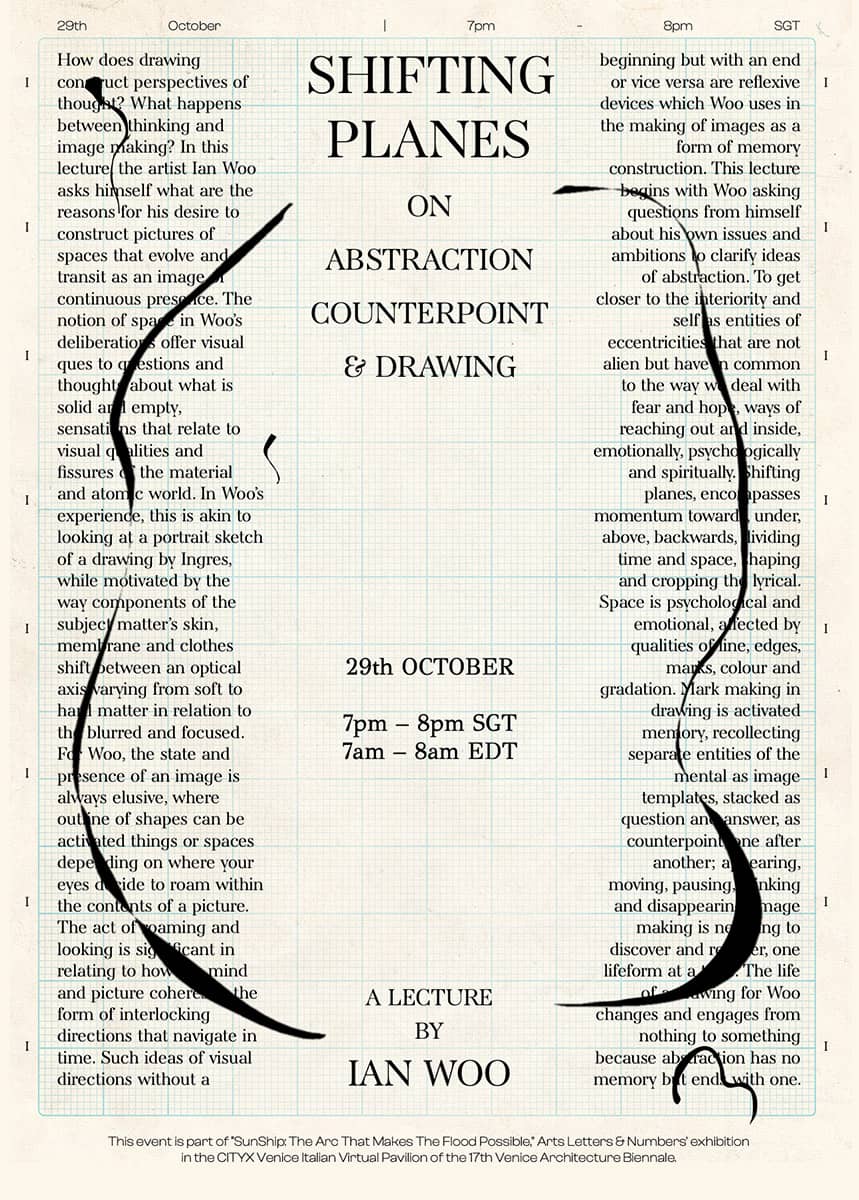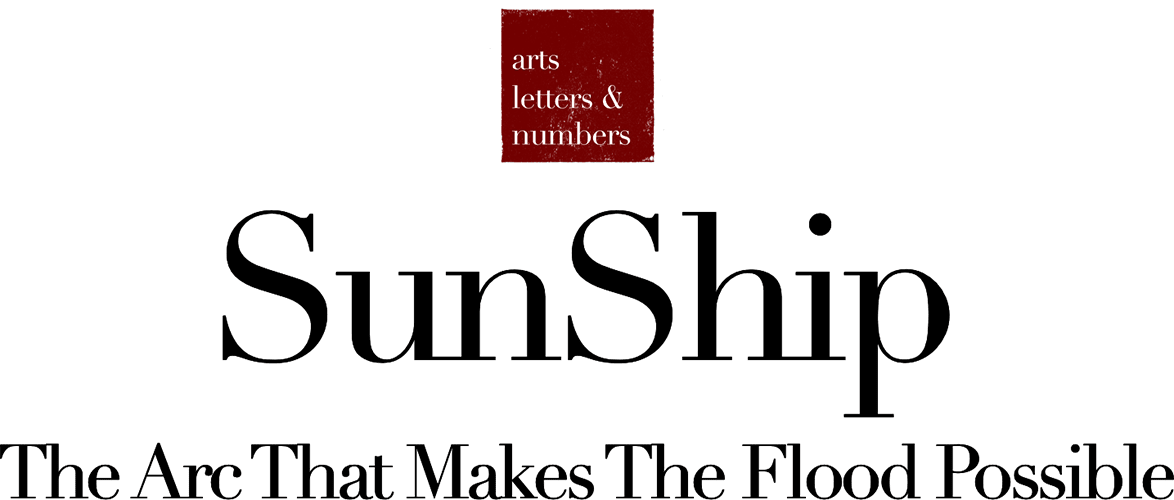SHIFTING PLANES:
On Abstraction, Counterpoint & Drawing

How does drawing construct perspectives of thought? What happens between thinking and image making? In this lecture, the artist Ian Woo asks himself what are the reasons for his desire to construct pictures of spaces that evolve and transit as an image of continuous presence. The notion of space in Woo’s deliberations offer visual ques to questions and thoughts about what is solid and empty, sensations that relate to visual qualities and fissures of the material and atomic world. In Woo’s experience, this is akin to looking at a portrait sketch of a drawing by Ingres, while motivated by the way components of the subject matter’s skin, membrane and clothes shift between an optical axis varying from soft to hard matter in relation to the blurred and focused. For Woo, the state and presence of an image is always elusive, where outline of shapes can be activated things or spaces depending on where your eyes decide to roam within the contents of a picture. The act of roaming and looking is significant in relating to how the mind and picture coheres in the form of interlocking directions that navigate in time. Such ideas of visual directions without a beginning but with an end or vice versa are reflexive devices which Woo uses in the making of images as a form of memory construction.
This lecture begins with Woo asking questions from himself about his own issues and ambitions to clarify ideas of abstraction. To get closer to the interiority and self as entities of eccentricities that are not alien but have in common to the way we deal with fear and hope, ways of reaching out and inside, emotionally, psychologically and spiritually. Shifting planes, encompasses momentum towards, under, above, backwards, dividing time and space, shaping and cropping the lyrical. Space is psychological and emotional, affected by qualities of line, edges, marks, colour and gradation. Mark making in drawing is activated memory, recollecting separate entities of the mental as image templates, stacked as question and answer, as counterpoint, one after another; appearing, moving, pausing, blinking and disappearing. Image making is negating to discover and register, one lifeform at a time. The life of a drawing for Woo changes and engages from nothing to something because abstraction has no memory but ends with one.

